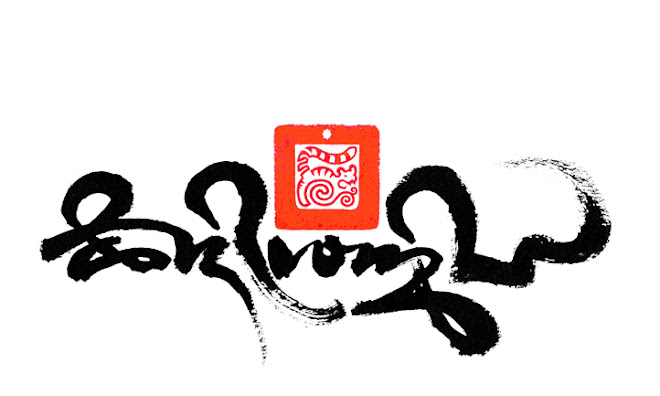 |
| Photograph by Rebecca Von Ommen. |
Michael Schwartz writes:
Integral Calligraphy
Calligraphy is the art of beautiful writing, the art of exquisite hand-written linguistic marks. Such is the aesthetic impact of the script that the verbal meaning need not be understood for the calligraphy to shine forth in profound significance.
Many world-historical cultures have evolved ramified calligraphic traditions, perhaps most well-known being those of Asia and Islam. Less popularly acknowledged amongst the Asian traditions, Tibet has its own remarkable lineages of calligraphy.
Tashi Mannox, an Englishman, and for many years an ordained Buddhist monk, has trained for decades in the arts of Tibetan calligraphy. Today he preserves this tradition as a vehicle to communicate and transmit dharma, all the while adapting and updating his approach within and for contemporary contexts. He identifies three streams in his work: (1) contemporary and traditional; (2) contemporary black on black, and (3) illuminated iconography.
In honoring contemporary contexts and concerns, some of his designs are presented as sacred tattoos. With certain commissioned work he offers the option of including bespoke seals that are specific to the calligraphic project and its patron. In all cases Tashi's art is an expression of his long and devoted meditative practice and spiritual realization, such that his art energetically transmits the Tibetan Buddhist View.
Several of the circular designs in the present exhibition approach the status of calligrams—the arrangement of script to form a picture—a device most often associated with strains of Islamic artistic practice and with experiments in Western modernism aligned with the poet Guillaume Apollinaire. A work like Emanate from Emptiness and Samsara—Cyclic Existence visually articulates the verbal meaning in a picture-like manner, amplifying rather than compromising the calligraphic beauty and integrity of the script itself. Indeed, the variety of Tashi's approaches is astonishing. With a work like Primordial Purity, Golden World, the pictorial is no longer built up from the script, but is an image in its own right, aspects of the script incorporated then meaningfully and expressively into the image. With Hum, Jyo-Protection, the mark-making itself is of a refined exquisite delicacy, the script streams and seals composed on the page to generate extraordinarily aesthetic coherence and expressive nuance.
Grounded thoroughly in the pre-modern Tibetan tradition, incorporating modernist visual schemes, and being multi-cultural and postmodern in drawing on other calligraphic lineages such as the spatial awareness proper to Zen calligraphic practice (while preserving the Tibetan core of style), Tashi Mannox's art is an authentic and exemplary instance of an integral calligraphy for our age.
February 2012

No comments:
Post a Comment